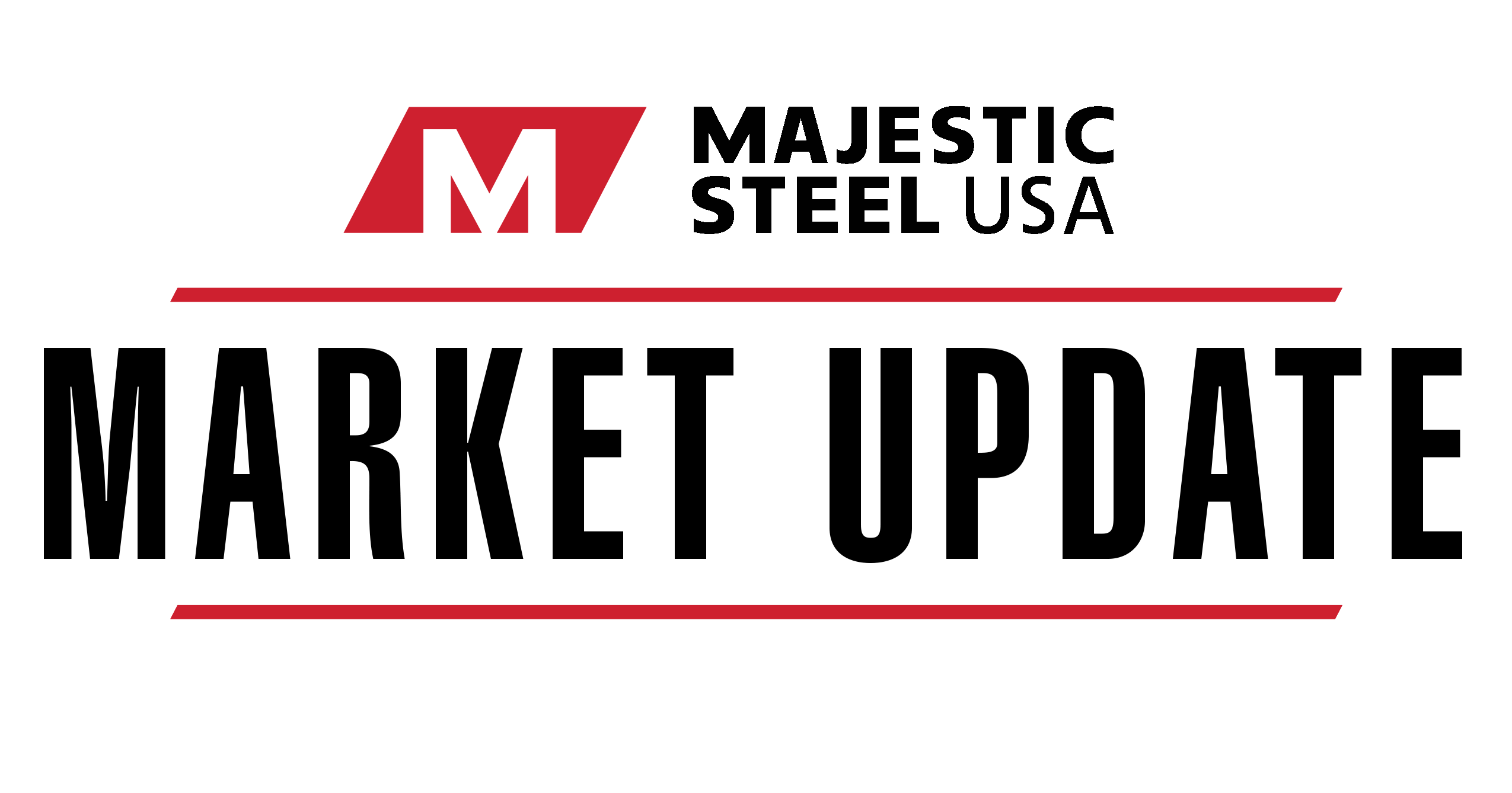Market Update | March 13, 2024
PRICES PAID BY U.S. CONSUMERS INCREASED IN FEBRUARY
Price paid by U.S. consumers climbed 0.62% from January and 3.15% from February 2023. This year-over-year increase followed the two-and-half-year low of a 3.09% increase in January. Prices paid for goods, excluding food and energy, increased 0.57% from January and were up 3.75% from February last year. This was the lowest year-over-year increase in prices paid since April 2021.
Input Costs
After a slight decline last week, zinc pricing rebounded to kick off the new month.
- Zinc pricing came in at $1.11/lb this week, up from $1.06/lb previously and is still below the 30-day average.
Spot iron ore pricing softened a little, slipping to $114/mt.
- Rising inventories and low steel mill profitability in China, combined with weaker steel demand in 2024, have negatively impacted iron ore pricing.
Coking coal pricing continued to decline this week, sliding to $294/mt.
- This is down 4.4% from last week and down 6.8% from this time last month.
March Chicago #1 busheling scrap settled at $420/gt, down $60/gt from last month and down $90/gt over the last two months.
-
- The current level is back to where pricing was in November.
- Shredded pricing in March saw a softer decline, sliding $45/gt to $410/gt.
- The new $10/gt premium for prime over shredded is the tightest the spread has been since October.
SUPPLY
After slipping last week, U.S. raw steel production rebounded sharply this week.
-
- U.S. steelmakers produced 1.734 million tons at a 78.1% utilization rate.
- This was the highest weekly output in more than six months.
- YTD production is down 1.7% from the same timeframe last year.
- U.S. steelmakers produced 1.734 million tons at a 78.1% utilization rate.
U.S. average coated lead times extended slightly this week after hitting a 52- week low last week.
-
- Average coated lead times increased to 7.18 weeks, on the back of a boost to lead times for EAF producers.
On Tuesday, the “Stop Mexico’s Steel Surge Act” was introduced in Congress, with the legislation aiming to reinstate Section 232 tariffs on Mexican steel imports at 25%, for no less than a year, and give the president authority to implement additional quotas and tariff rate quotas on specific products if needed.
-
- This follows concerns raised by the U.S. steel producers as Mexican imports have been trending above the historical average.
DEMAND
The Dodge Momentum Index came in at 180.5 in February, down 1.4% from January.
-
- The February reading, combined with the downward revision to the January Index pushed the index down for second consecutive month.
-
- Within the DMI, the commercial planning component declined 2.3%, while institutional planning increased slightly (0.1%).
- Weaker office and healthcare planning constrained nonresidential planning in February.
- The Index remains 25% higher than where it was just two years ago.
- Most other categories showed growth over the month and Dodge remains optimistic that nonresidential planning will stay elevated throughout 2024 alongside rising confidence in 2025 market conditions
- Within the DMI, the commercial planning component declined 2.3%, while institutional planning increased slightly (0.1%).
Increased domestic mill shipments, combined with increased imports, helped to overcome higher exports to push total carbon steel consumption higher in January.
-
- Total carbon steel consumption came in at a 269.1 thousand tons/day pace, up from December and 4.1% from the 258.6 thousand tons/day rate in January 2023.
- Carbon flat rolled consumption increased as well, climbing 6.4% from December to an 152.8 thousand tons/day rate.
-
This was the highest daily pace since January 2022.
-
- Coated flat rolled consumption increased sharply in January, climbing 15.1% from December to a 58.0 thousand tons/day rate.
- Coated flat rolled consumption was at its highest daily rate since April 2022.
ECONOMIC
The Cass Information Inferred Freight Rate Index continued to slide in February and has now seen double-digit percentage, year-over-year, declines in each of the last eleven months.
-
- Inferred freight rates are a simple calculation of total freight expenditures divided by total number of shipments.
- While both the total number of shipments and total cost of shipments increased in February, the larger increase came from the number of shipments.
- Inferred freight rates are a simple calculation of total freight expenditures divided by total number of shipments.
-
- The February Inferred Freight Rate came in at 2.89, down 16.0% from February 2023 and is at its lowest level since May 2021.
- Based on recent normal seasonally patterns, the current trajectory from here would put inferred freight rates down 13% for the first half of the year when compared to the same timeframe last year.
Prices paid by U.S. consumers increased further in February, climbing 0.62% from January and 3.15% from February 2023.
-
- This year-over-year increase followed the two-and-half-year low of a 3.09% increase in January.
- Prices paid for goods, excluding food and energy, increased 0.57% from January and were up 3.75% from February last year.
-
This was the lowest year-over-year increase in prices paid since April 2021.
- Compared to last year, prices for shelter increased 5.7%, accounting for roughly 2/3rds of the total increase.
- Other indexes with notable, year-over-year, increases includes motor vehicle insurance (+20.6%), medical care (+1.4%), recreation (+2.1%), and personal care (4.2%).
-
This material, information and analyses (the “Content”) may include certain statements, estimates and projections prepared with respect to, among other things, historical data and anticipated performance. Content may reflect various assumptions by Majestic Steel USA, Inc. concerning anticipated results that are inherently subject to significant economic, competitive and other uncertainties and contingencies and have been included for illustrative purposes. Content is provided AS-IS.

